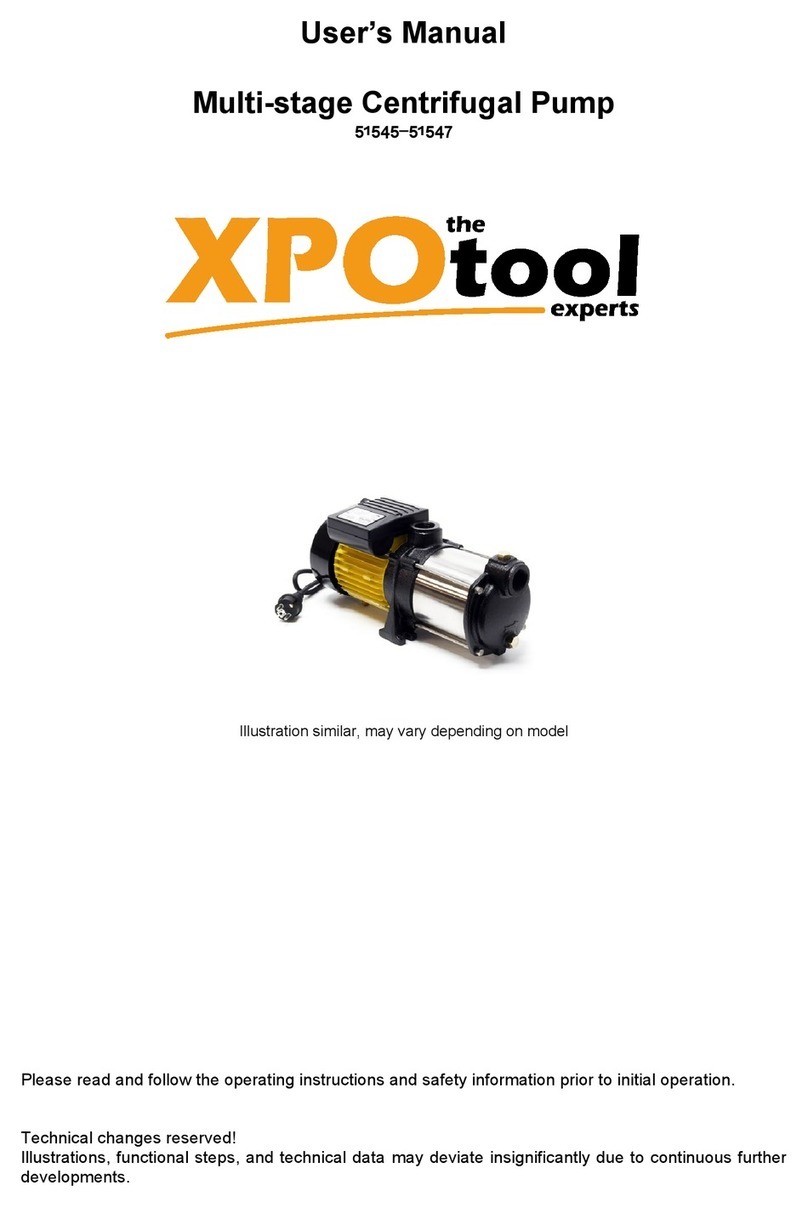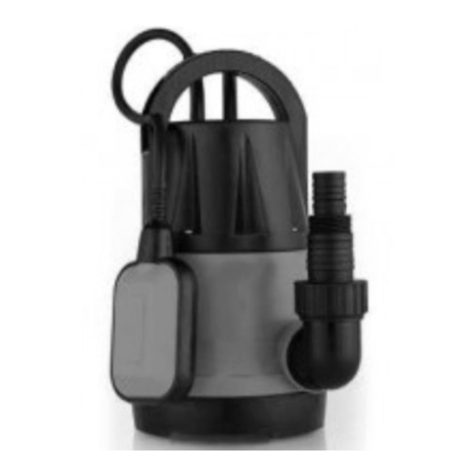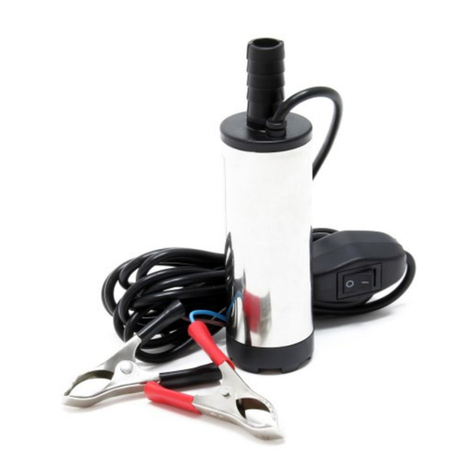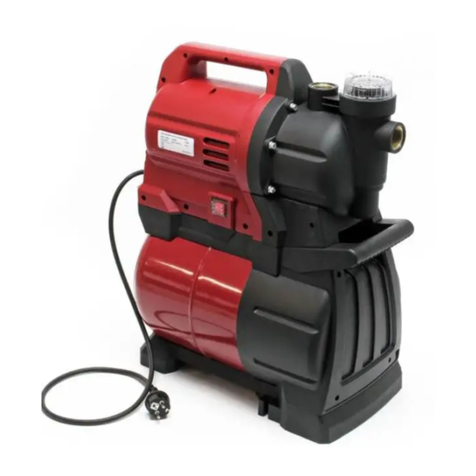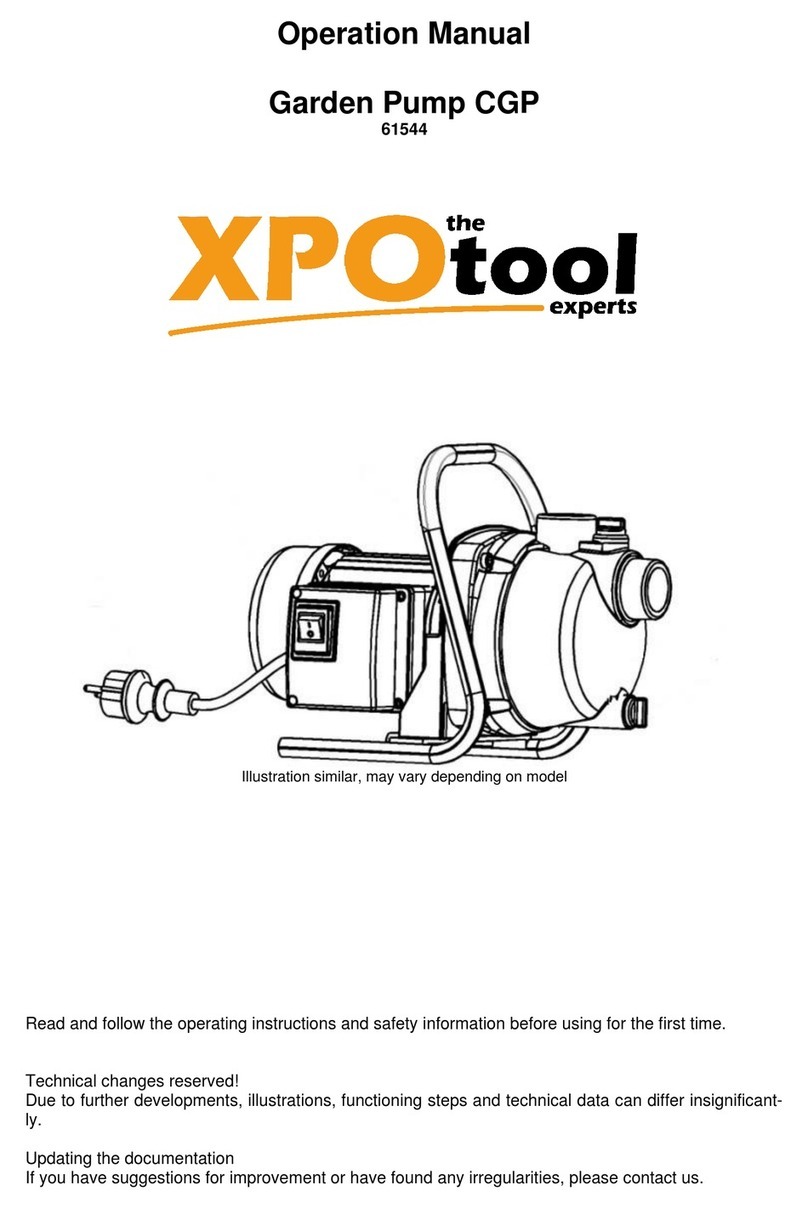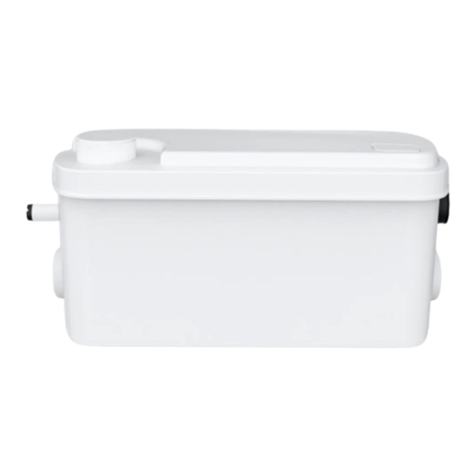https://www.XPOtool.com Item 62795 Page 4
The Tool Experts
06 2021-1
First steps
1. Loosen the wing screws on either side of the oil cartridge and tilt the construction by 20–30°
so that the air enters the lower end of the rubber plate. This can be carefully pulled out without
having to dismantle any parts.
2. If necessary, inject grease into the oil container. When filling up, make sure that the level mark
is not exceeded and that the grease is properly compressed to avoid the formation of bubbles.
3. The assembly parts (e.g., lid of oil pump, oil pressure device, etc.) should protrude vertically
into the oil storage cylinder so that the rubber plate is pressed against the rough surface. In-
sert the grease feed pipe into the bottom of the housing. Now tighten the locking screw locat-
ed next to the tank cover.
4. Before putting the pump into operation, check all hoses for damage and immediately replace
damaged hoses.
5. Then attach the air inlet hose to the air supply quick connector.
6. Insert the quick connector into the air inlet port to let in the compressed air and open the pres-
sure control valve. After being pressurized, the pump is likely to start moving up and down and
venting air through a sleeve. The oil filling pump starts to work and the lubricant gradually fills
the pipeline of the piston oil pump and fills the oil outlet. At this point, connect the oil pump to
the high pressure hose of the oil gun. Before connecting, the individual connection parts must
be cleaned. Tighten the nut with a wrench to prevent oil leakage.
7. When the oil pressure increases gradually and the air pump has been operating for a while,
the up-and-down movement of the oil pump will start to slow down until it stops completely. At
this moment, the pressure in the oil pump reaches a state of balance and the oil pressure
reaches the highest value. As soon as the grease pump is triggered, the oil is expelled from
the nozzle. As the grease escapes, the pressure in the oil pump tends to become unbalanced,
and the oil pump automatically resumes its up-and-down movement to refill the grease.
8. When the pump is filled with grease again, and the oil pressure reaches the highest value, the
up-and-down movement stops. The oil pump works in this way repeatedly. When the oil pump
stops moving and the oil pressure is at its highest, the connections must be carefully checked
for leaks. After having completed the above work, you can proceed with the oil filling.
Important instructions:
In order to guarantee the longevity of the pump and to achieve optimal and faultless performance,
note the following information:
•The compressed air should be filtered to prevent the ingress of dirt particles and additional
wear and tear on the pump and its parts.
•The pressure at which the device is used should not exceed 8 bar in order not to impair the in-
tegrity and longevity of the individual parts and hoses.
•When using high-pressure grease hoses, make sure that you do not kink or squeeze the hos-
es or stress them too much by pulling or tensioning them.
•If the device is not in use, the quick connection nipple should be loosened. You should also
operate the grease syringe to release the hoses and other components from residual pres-
sure.
•The pump should be oiled at regular intervals.
•Do not use the machine if the grease level is too low, as this may cause overheating and
damage to the piston and other parts.
•Clean the pump regularly and remove any grease residues. To do this, also remove the
grease syringe to prevent possible damage. Only use cleaning oil to clean the grease chan-
nels and make sure that the grease in the pump container is free from contamination.

